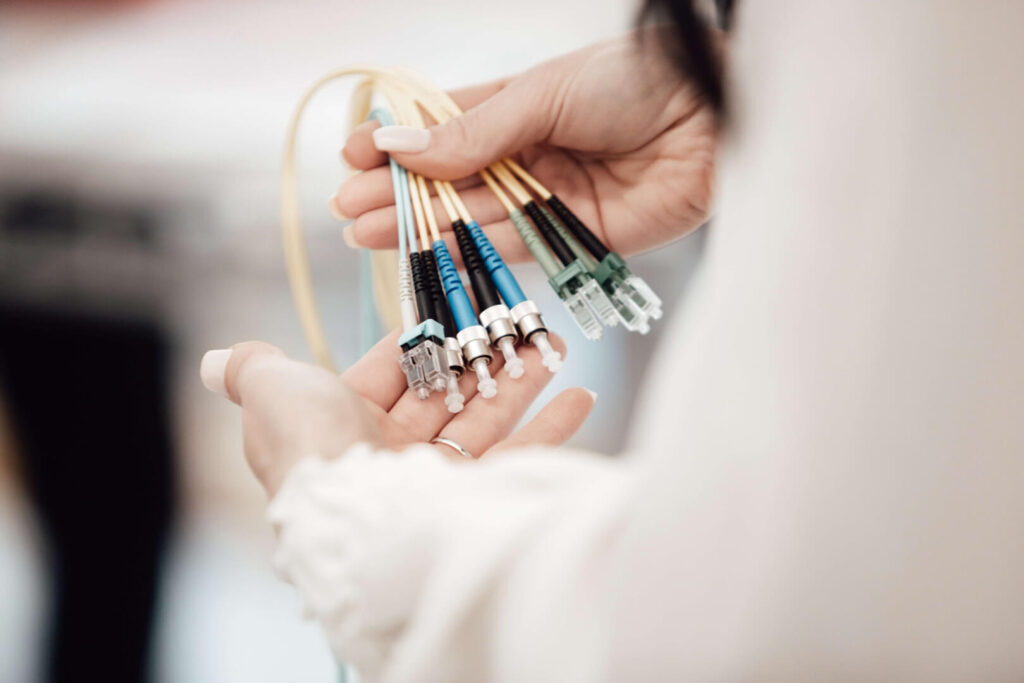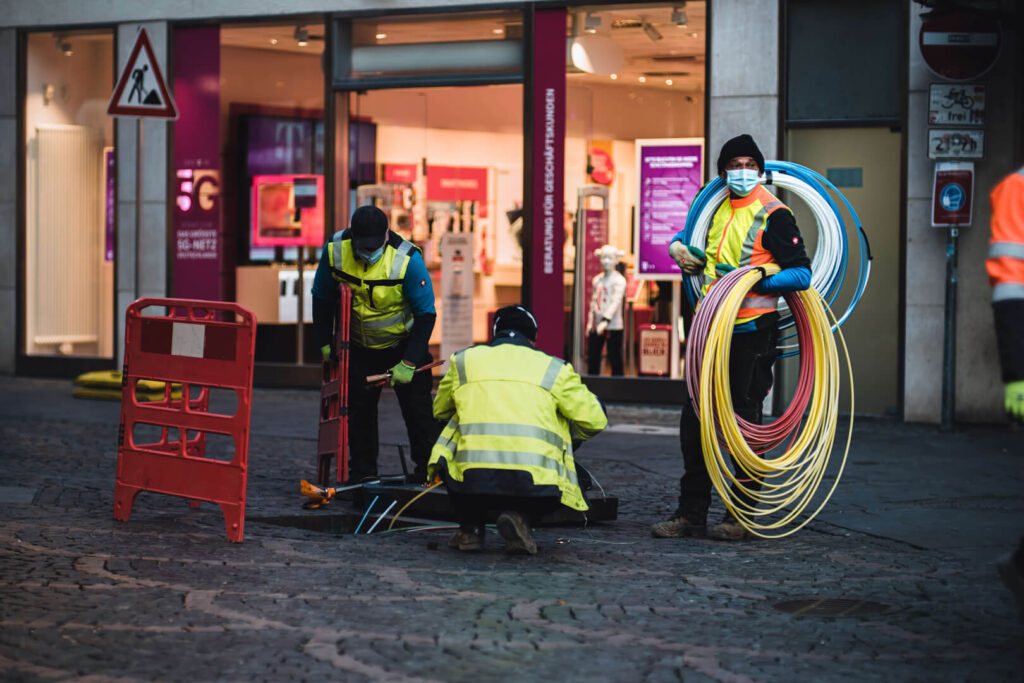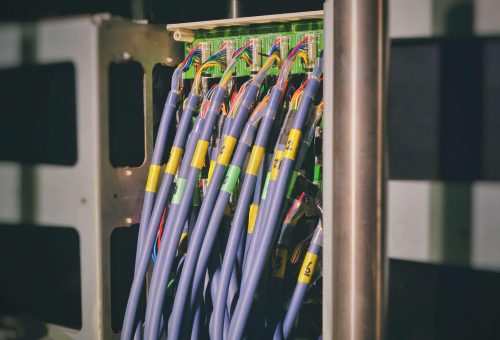Warning: Undefined array key "background_image" in /home/u409948481/domains/wifigenius.uk/public_html/wp-content/plugins/elementor/includes/conditions.php on line 87
Warning: Trying to access array offset on value of type null in /home/u409948481/domains/wifigenius.uk/public_html/wp-content/plugins/elementor/includes/conditions.php on line 90
Warning: Undefined array key "background_image" in /home/u409948481/domains/wifigenius.uk/public_html/wp-content/plugins/elementor/includes/conditions.php on line 87
Warning: Trying to access array offset on value of type null in /home/u409948481/domains/wifigenius.uk/public_html/wp-content/plugins/elementor/includes/conditions.php on line 90
Steps Involved in Fibre Optic Installation
The installation of fibre optic cable is a complex and precise process! It requires attention to detail in order to ensure successful completion. The steps involved include an initial site survey, cable routing, and finally, cable pulling.

Site Survey
During the site survey phase, an assessment of the area happens – where the fibre optic cable is necessary. It will explore all possible pathways for the cable so that it can be laid efficiently and safely. The architectural layout of the building may also need to be taken into account when considering potential pathways. This includes both existing cabling systems (if there are any) as well as doorways, walls, and ceilings that may need to be cut through or drilled into. It is important to plan out a route before beginning any physical installation work. This will help in order to minimize disruption and potential damage.
Cable Routing
Once a pathway has been established, the next step is cable routing. This involves connecting cables from one point in a system to another using appropriate connectors and devices such as junction boxes and patch panels. This is an important part of the installation process. It ensures that all components connect properly so that data can flow freely between them without interruption. Additionally, cables should be labeled with their corresponding devices or locations for easy identification during maintenance or troubleshooting in the future.

Cable Pulling
The final step in fibre optic cable installation is cable pulling. This involves physically running each strand of fibre through its designated pathway by attaching it to specialized pulleys or tensioners along the way. It is important to ensure that proper precautions are in place prior to pulling any fibre. This is because they can easily become damaged if handled incorrectly or stretched too tightly while being installed. After all, fibres have been pulled through their designated routes, a fibre optic continuity test should then be performed in order to check for any signal losses or breaks in continuity along its length. Once the technician does this successfully, then the entire system can be operational for use.
Fibre Optic Cable Installation: From Site Survey to Connector Block Joining
Fibre optics are made up of strands of glass or plastic that are thinner than a human hair. This allows them to carry greater volumes of data at much faster speeds than copper wiring.
The data transmitted through fibre optic cables also has less signal loss over long distances. Hence, making them ideal for large-scale networks and applications in remote locations. Plus, because the cables do not generate electromagnetic interference, they can be safely used near sensitive equipment without fear.
In addition, fibre optic cables are extremely durable and resistant to environmental damage such as moisture, temperature fluctuations and corrosion. As a result, these cables have a much longer life expectancy compared to traditional copper cabling! Moreover, they require far less maintenance in the long run.
Furthermore, due to their low weight and small size, fibre optics make it easier to install complex networks in confined spaces or difficult-to-reach areas.
The superior performance offered by fibre optic cabling makes it well-suited for both residential and commercial applications. These range from internet access to high-speed corporate networks.
It offers fast transmission speeds and reliable connections even over long distances with minimal signal loss. Hence, they provide an ideal solution for those looking for high-quality connections without compromising on performance or cost efficiency.
Types of Fibre Optic Cables and Their Applications
Fibre optic cables are a type of communication cable made from incredibly thin strands of glass or plastic. The glass or plastic fibres bundle together in a tube containing a core, cladding, and buffer coating.
Depending on the application, there are several different types of fibre optic cables. These help in transmitting data signals over long distances. However, they vary in their construction and characteristics.
The most common types of fibre optic cables include single-mode, multi-mode, plenum, riser, armored, direct burial, and aerial.
Single-mode offers the highest bandwidth capacity with long-distance performance of up to 10 kilometers. However, multi-mode has a relatively lower capacity with shorter distances (up to 2 kilometers).
Plenum cables have insulation that makes them suitable for use in air ducts and drops ceiling spaces. This is good for places where flammable materials can be present.
Riser cables do not contain any fire-retardant properties. It makes them suitable to run vertically between floors without having to worry about fire safety regulations.
Armored cables have the protection of an outer metal layer. It helps protect against physical damage as well as water intrusion due to its strong waterproofing capabilities.
Direct burial cables help specifically for outdoor applications such as underground installations. This is because there is an increased risk of mechanical damage from digging or other external forces.
Lastly, aerial fibre optic cables are above ground level typically along poles or buildings usually for short runs (less than 500 meters). This is because these types of installations require less maintenance and fewer connections than buried lines.
Different Fibre Optic Cable Installation Methods
Overhead Fibre Optic Cable Installation
Overhead installation is the most cost-effective and straightforward method of installing fibre optic cable. This type of installation is ideal for short-distance applications, usually between two buildings or sites.
Advantages to overhead installations include no need for excavation and increased ease of access for future maintenance. Additionally, overhead installation eliminates the risk of water or other material damage that often occurs with underground methods.
Disadvantages include decreased security due to the threat of physical tampering, as well as potential interference from nearby power lines or weather elements. Underground Fibre Optic Installation
Underground installation is typically good for longer-distance fibre optic cable runs and requires a greater amount of time and resources than overhead installation.
An advantage to this method is better security due to being beneath the surface, making it difficult to physically tamper with the cable.
However, there are also several drawbacks of underground cabling such as higher costs due to the higher labor involvement in excavation and additional difficulty when it comes time to access the cables for maintenance or repairs.
Additionally, if not careful with laying materials properly during construction there may be an increased risk of material damage from water or wind erosion over time.

